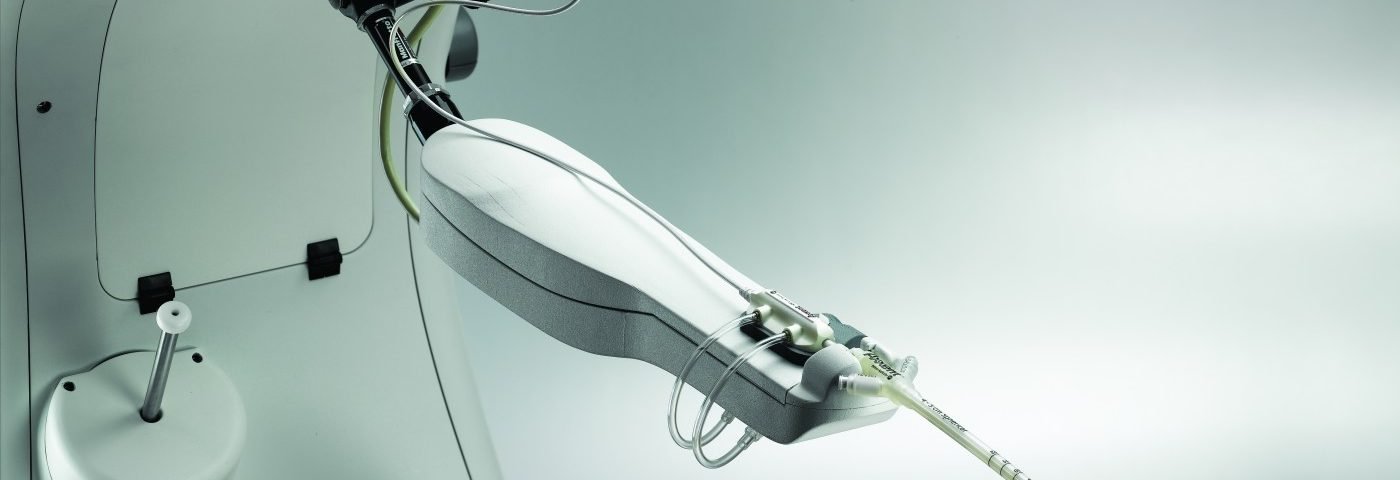ICAD is showcasing its Xoft radiation system for treating post-surgery residual breast cancer at the American Society of Breast Surgeons annual meeting in Las Vegas.
Two leading breast-cancer surgeons agreed to be at the Xoft booth during the conference, which started April 26 and runs through April 30, to explain how they use the non-radioactive system to treat early-stage breast cancer.
Patients usually receive radiation therapy five days a week for five to six weeks. The Xoft system delivers a concentrated dose of radiation directly into the tumor during surgery, an approach that doctors call interoperative radiation therapy, or IORT. In addition to breast tumors, it is used to treat a number of other cancers.
Radiation during surgery helps kill any microscopic bits of cancer that could remain after a tumor has been removed. It also reduces subsequent radiation treatments.
“With the growing worldwide adoption of the Xoft System, an increasing number of clinicians are recognizing that this revolutionary technology offers a safe and effective treatment option for patients with early-stage breast cancer who meet specific selection criteria,” Ken Ferry, CEO of iCAD, said in a press release. “We are pleased to highlight the unique clinical experiences of two expert Xoft IORT breast surgeons at this year’s ASBrS meeting and share in their commitment to making innovative, clinically-proven treatment options like IORT available to their patients.”
The U.S. Federal Drug Administration has approved the Xoft system for treating breast and several other types of cancer. The company has licensed the device for sale in a number of countries, and is increasing that list.
The system uses X-rays instead of radioactive material to deliver radiation to cancerous areas, sparing healthy tissues and organs. It is administered through a small balloon applicator inserted into the lumpectomy cavity — the area where surgeons remove a tumor and surrounding tissue.
Cancer centers like the idea that the Xoft system requires no radiation-room redesign and minimal shielding. Xoft radiation therapy typically takes eight to 15 minutes, allowing doctors to remain in the room while it is being administered.
The breast surgeons who agreed to discuss the Xoft system at the conference are Dr. Craig Wengler of the Martin Health System in Stuart, Florida, and Dr. Janie Grumley of the Virginia Mason Hospital & Medical Center in Seattle.
“Our adoption of IORT with the Xoft System has allowed my practice to offer patients many unique and valuable benefits, including shorter treatment times, reduced costs, fewer side effects and added convenience compared to traditional treatment,” Wengler said. “Because the treatment is delivered in one dose, my patients are able to return to their normal daily activities within days and better maintain their regular routine and quality of life.”
Doctors from Hoag Memorial Hospital Presbyterian in Newport Beach, California, will discuss the facility’s four years of using the system in a poster session on Saturday, April 29. The poster is titled “Four-Year Results of a Single Site X-Ray IORT Trial for Early Breast Cancer.”

